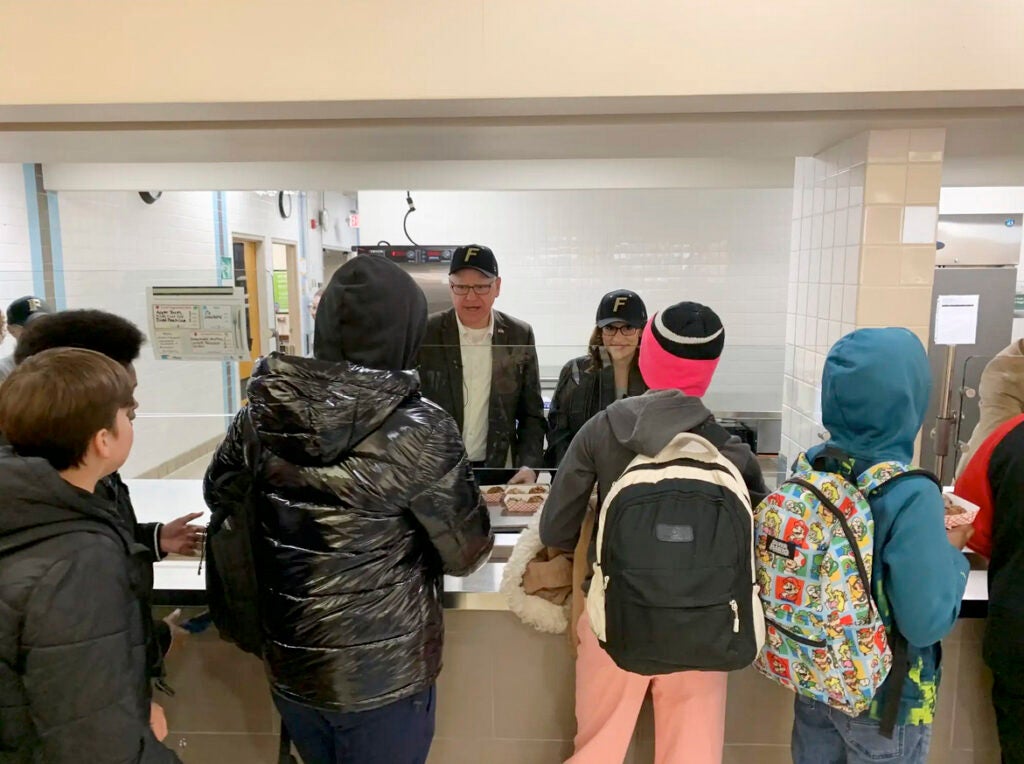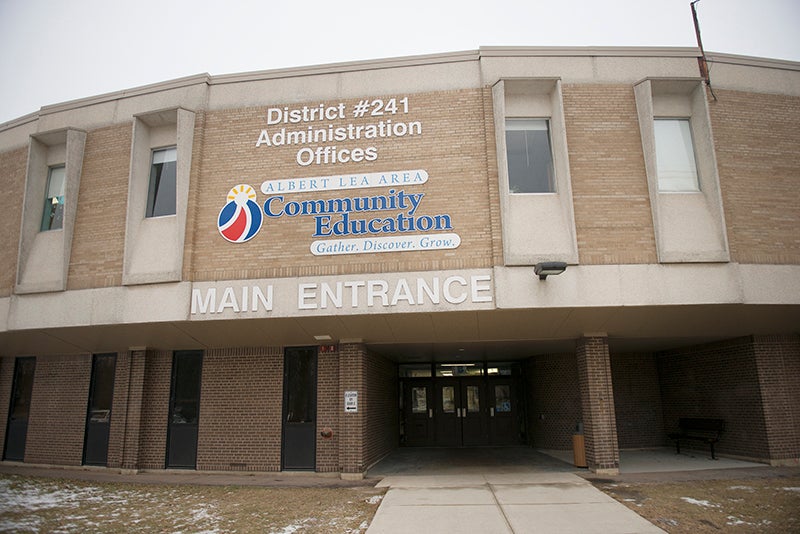Minnesota’s free school meals push driving big jump in breakfasts
Published 2:15 pm Friday, March 8, 2024

- Gov. Tim Walz and Lt. Gov. Peggy Flanagan serve breakfast to Fridley Middle School students on Friday. Dana Ferguson/MPR News
|
Getting your Trinity Audio player ready...
|
By Dana Ferguson, Minnesota Public Radio News
Minnesota saw a 37 percent increase in demand for school breakfasts during September, October and November — a total of 4.3 million more served — compared to the same time frame a year earlier.
Gov. Tim Walz, Lt. Gov. Peggy Flanagan, state education officials and others on Friday highlighted the impact the state’s universal school meal program has had during the first few months of its rollout as they served warm muffins, mini pancakes, cereal and fruit at the Fridley Middle School cafeteria
Walz last spring signed a bill providing free breakfasts and lunches at schools across the state to any student, regardless of family income.
“This is hands-down the best investment that we can make as a state,” Flanagan said. “I’m so proud to live and lead in a state that is committed not only to making life more affordable and better for everyone, but a state that really sees the importance of feeding kids during the school year.”
Demand also jumped for school lunches — 4.5 million more meals compared to fall 2022, a 15-percent increase that eclipsed early estimates.
State leaders said they were surprised by the higher-than-expected demand for meals. Minnesota topped other states that had implemented similar programs, said Cindy Long, administrator for the U.S. Department of Agriculture’s Food and Nutrition Service.
State budget officials late last month said they expected the program could run $107 million more over the next two years than initially projected. That was based on school meal data for September and October.
State lawmakers are considering legislation to send out extra funds to school districts to cover the breakfast and lunch bills.
Education committee chairs in the DFL-controlled Legislature said they were confident the additional funding would pass. They also said they were pressing the passage of a new program to allow students that bring a packed lunch to get milk at school, if they want to. The addition is estimated to cost an extra $2.3 million a year.
“This is the hill I will die on. If we need to find a little more money to pay for these, we will,” Walz told reporters. “We will budget for a 37 percent increase next year that we got out of this and make it work. This is money saved in the long run.”
Fridley teachers said the program has had a profound impact in the classroom. Rather than coming to class hungry and unfocused, students can count on meals when they arrive and spend time chowing down and getting ready to learn.
“Not only are my students able to come to class and learn, but they’re able to then access higher thinking, they’re able to come to school and not have to worry about where their next meal is coming from, said sixth grade teacher Jessica Rifley. “They’re able to focus on being a child and learning and that is really what we’re here to do.”





